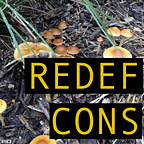Mouse v. Me: A Case of the Wild, the Kitchen, and a Conservation Myth
This summer, a mouse moved into my apartment. I did not want it, the mousetraps did not kill it, and no amount of cleanliness discouraged it. At first, the mouse was an invader. What right did it have to live in my home? It’s an animal. It doesn’t appreciate the plumbing and hardwood floors like I do.
But after a few weeks, the mouse became less intrusive. I still hated it, but I understood its presence. If I had easy access to the palace of a giant that, although not benevolent, did not understand how to get rid of me, then I might rustle around there, too.
As I prepared to move at the end of the summer, I still had that automatic disgust reaction whenever I saw the mouse. But it wasn’t quite the same. He had big ears and a kind soul (I assume). We both wanted shelter from the heat, and this apartment was the most convenient place. He was a disruptive, unexpected, unwanted blast of nature, and he made me reconsider the boundaries between humans and non-humans.
There are other examples: plants in the sidewalk cracks, a bird’s nest perched on a telephone pole, a wildfire touching a suburban neighborhood. Fascinating, beautiful, tragic. Little reminders that the earth is not submissive. Parks cannot contain nature, for better or for worse, and sometimes it ends up in our kitchens.
My mouse blurred the clean lines of inside world and outside world. I could choose to go on a hike, but I could not choose to isolate myself from my habitat entirely. Yes, it’s gross when it’s a mouse, but there is nothing more appropriate than a persistent rodent to challenge our dominance.
As I conservationist, I feel guilty for not having an unconditional love for all of the creatures on earth. I have no desire to befriend the mouse. I’m impressed with myself for coming to a near truce with it. Also as a conservationist, I must wonder why we try so hard to draw impossible lines. It serves our mission — to protect the pure places, the wild places — but there is no such thing. If we force ourselves to pretend that the wild exists, then we end up trying to say that our apartments are not the wild, and then a mouse comes along and destroys that theory.
I am letting go of my need for the pristine. It is not a useful myth for the conservation world to harbor. It doesn’t need to be our drive or our purpose. Not when issues like climate change, clean water, and the illegal wildlife trade all have urgent uses for us. Our cultural notions of the wilderness shape the wilderness. We have a very human way of defining, limiting, and creating something that we want to exist outside of ourselves. In response, the wild sometimes lets us know that it can shape our lives, too — one mouse at a time.
****Originally published on redefineconservation.com. Thank you for reading, and make sure to follow us (@Redef_Cons) on Twitter!
